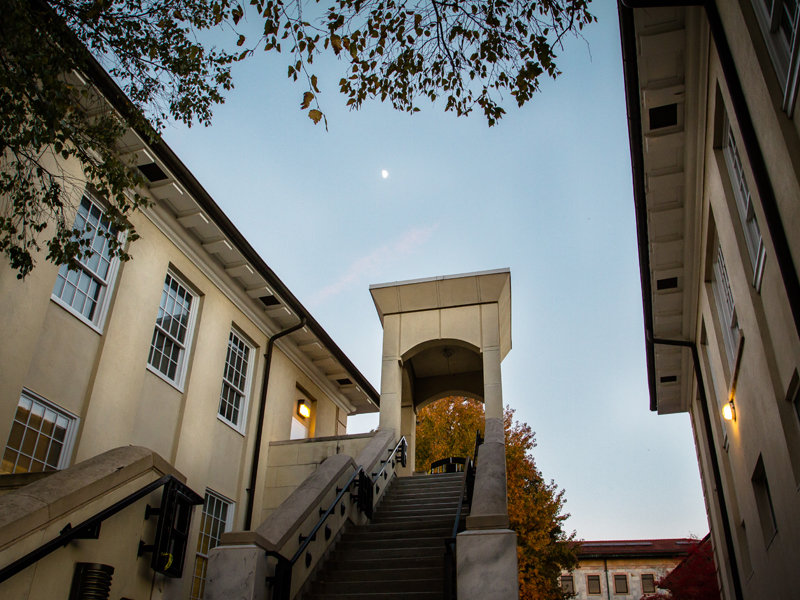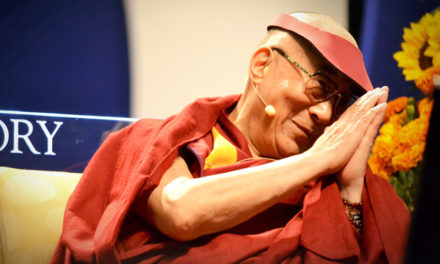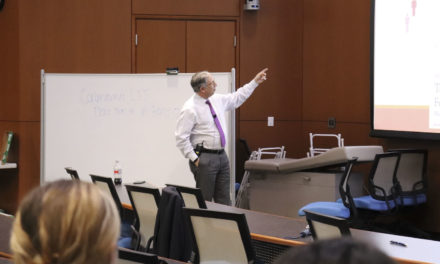What happens when people die?
For about the past 20 years, that’s the question that Gary Laderman, professor and chair in the Department of Religion, has sought to discuss in his course “Death and Dying,” which he inherited from Professor Emeritus Gene Bianchi.
The class studies the concept of death in Hinduism, Ancient Egypt, Islam, Native American cultures, Christianity and the United States, Laderman said.
In the 1970s, the course started with eight students and grew to 12 in the second year, 80 a few years later and 170 presently, according to Laderman. The course fills the largest lecture hall in the Math and Science Center.
While he can’t create the same personal relationships with the larger class size, Laderman said he has found through the years that students take the course for a multitude of reasons, including experiences with death, natural curiosity or future careers in a health-related field.
According to Laderman, a possible explanation for the increased enrollment is the increase of people within the college age group who claim no religious affiliation. These students are more curious about religion and religious responses to death.
Laderman said the rise of “nones” who claim no religious affiliation may be unique in this moment in time and contributes to the popularity of the course.
College freshman Maddie Klingeman said she decided to take the class after taking “Religion and Sexuality” with Laderman during the fall semester, which inspired her to learn more about religion.
She also said she enjoyed how “he shifts the focus from grades to learning, allowing students to truly appreciate the topic instead of getting wrapped up in grades.”
Klingeman said she considers herself more culturally religious than spiritually religious, but that wasn’t the determining factor when she decided to take the course.
“Personally, I think the class is relevant to everyday life because not only does everyone experience death firsthand, but secondhand with loved ones as well,” Klingeman said.
One of the ways Laderman makes the topic more relatable is the inclusion of references to pop culture, especially music, according to Klingeman.
College freshman Sabrina Paxton said she is fascinated by how religions that are less prevalent in our society, including Hinduism and Native American traditions, think differently about death and the soul.
“The class teaches students the ways in which each has focused on death over time, especially in pop culture, where today it is very prevalent,” Paxton said.
While the class is much larger than the “Religion and Sexuality” class, Laderman takes command of the class and keeps the attention on the exciting material, according to Klingeman.
Similar classes are being taught at schools around the country, according to Laderman.
According to a July 2 Herald-Tribune article, the University of Florida has offered a class by the same name taught by Hannelore Wass, former professor of gerontology and founder of the journal Death Studies who died in 2013, since 1970.
“This is a class where you walk out and look at trees differently,” Wass said in the article. “You look at life differently.”
Laderman said that while he imagines each student has some experience with death coming into the class, he tries to keep the personal out of the classroom. The only personal question he poses is whether or not the students have seen a corpse, with students who answer yes rising in recent years.
“Death is so overwhelmingly present in popular culture – music, films, gaming, literature and so on – that this course is a natural fit in the popular imagination of college students,” Laderman said.
– By Alyssa Posklensky
The Emory Wheel was founded in 1919 and is currently the only independent, student-run newspaper of Emory University. The Wheel publishes weekly on Wednesdays during the academic year, except during University holidays and scheduled publication intermissions.
The Wheel is financially and editorially independent from the University. All of its content is generated by the Wheel’s more than 100 student staff members and contributing writers, and its printing costs are covered by profits from self-generated advertising sales.






